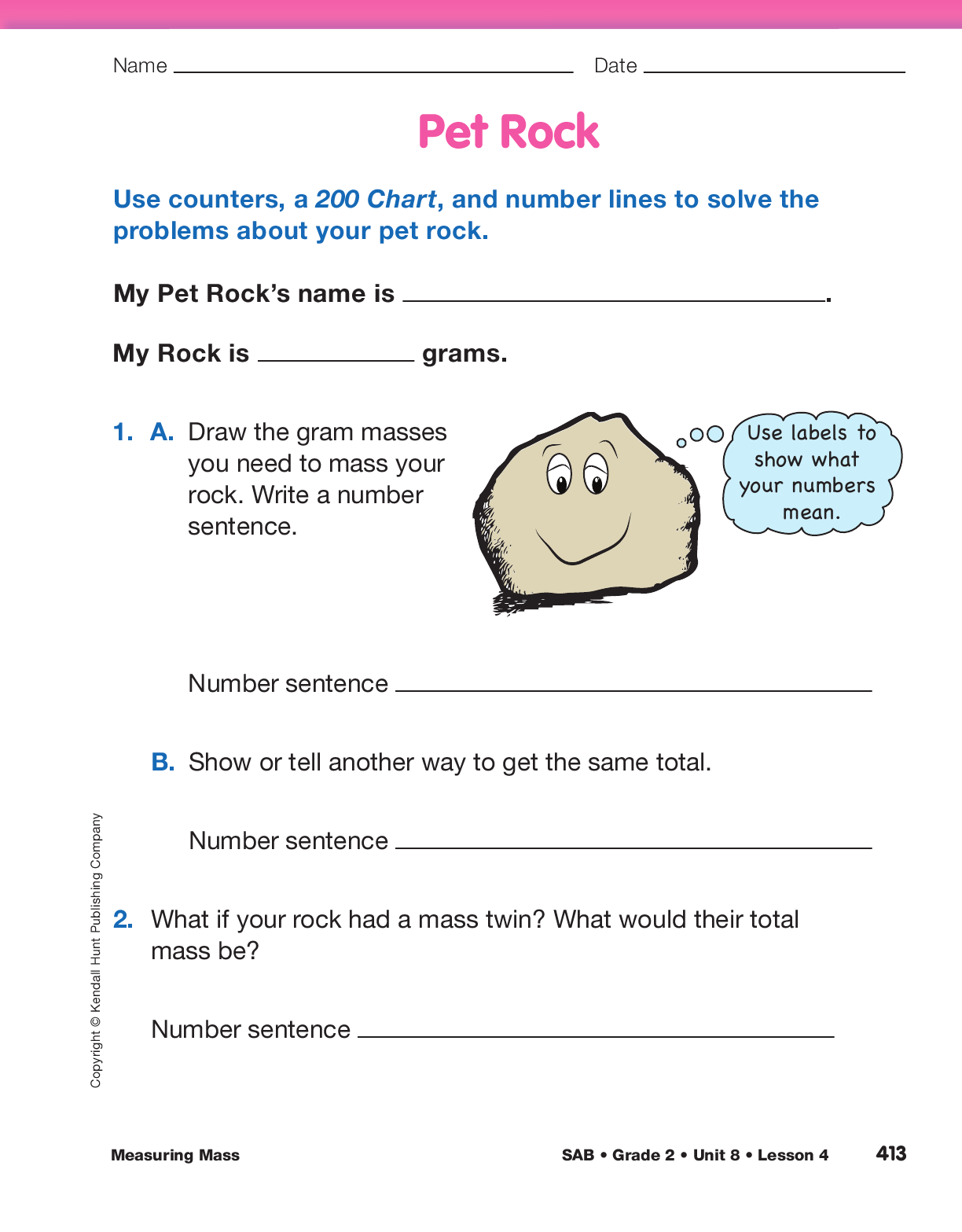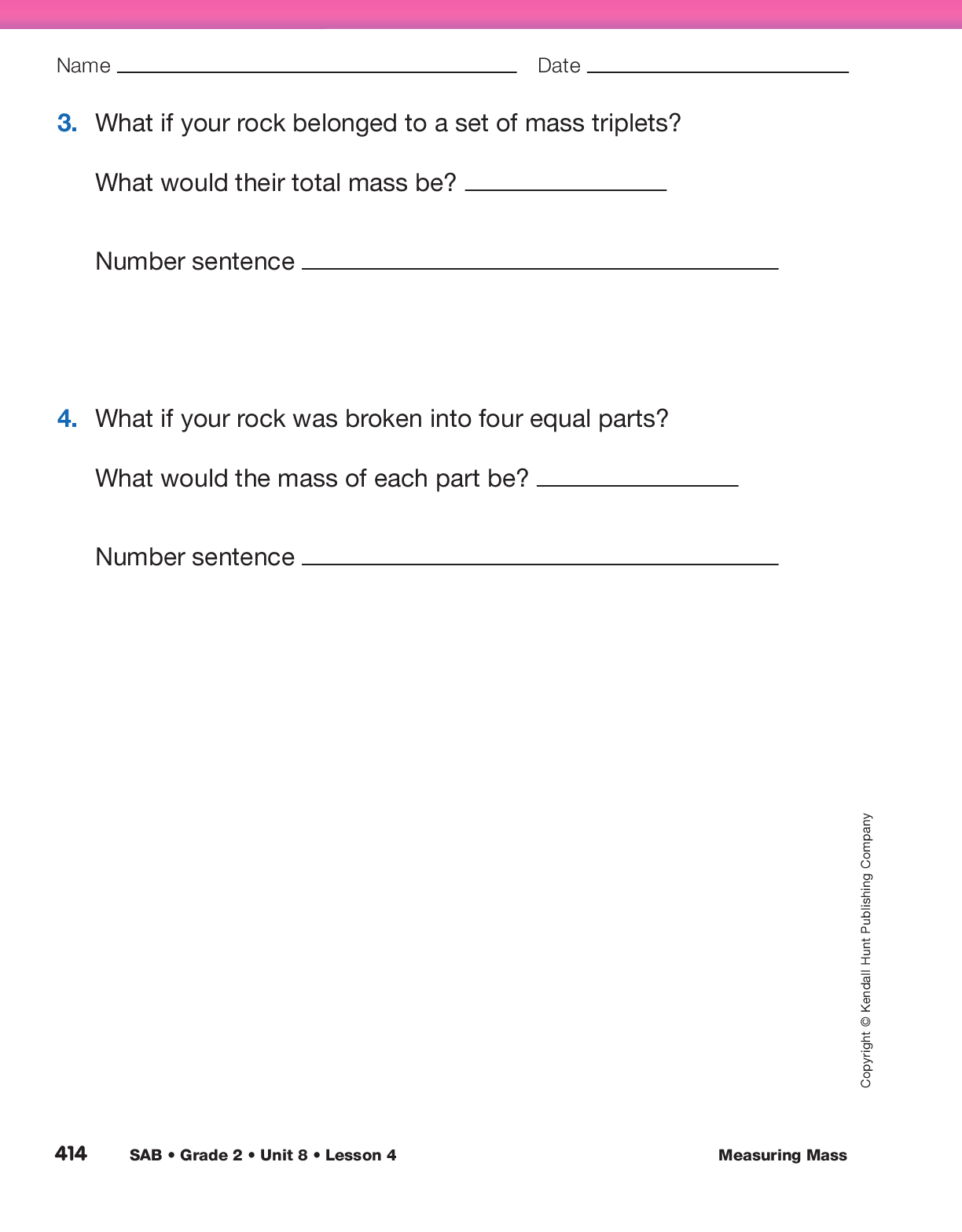Measuring Mass
Est. Class Sessions: 3Summarizing the Lesson
Ask students to display the rocks that they brought from home. The rocks should be about 50 grams. Have students work with a partner to check the accuracy of their estimations by using zeroed two-pan balances and standard masses to find the rocks’ exact masses. As students are measuring, circulate around the room and assist as needed. If you are able to find a rock that is smaller in size, but has a mass that is greater than other rocks larger in size, take note. You can use it to illustrate a key concept that material is an important variable in determining mass. For example, depending on what an object is made of, smaller objects can have more mass than larger ones.
Students should record the mass on the Pet Rock page in the Student Activity Book. Next, ask student pairs to compare masses.
Ask:
If you were able to find a small rock with a mass greater than a large-size rock, point this out to students. Display the rocks and use the two-pan balance to show students that the small rock has a greater mass than the other rock. If you were unable to find one, compare a large marshmallow or a cotton ball to a rock that is smaller in size, but greater in mass.
Ask:
Assign the Pet Rock page in the Student Activity Book. Tell students they will solve problems using the mass of their rock.















